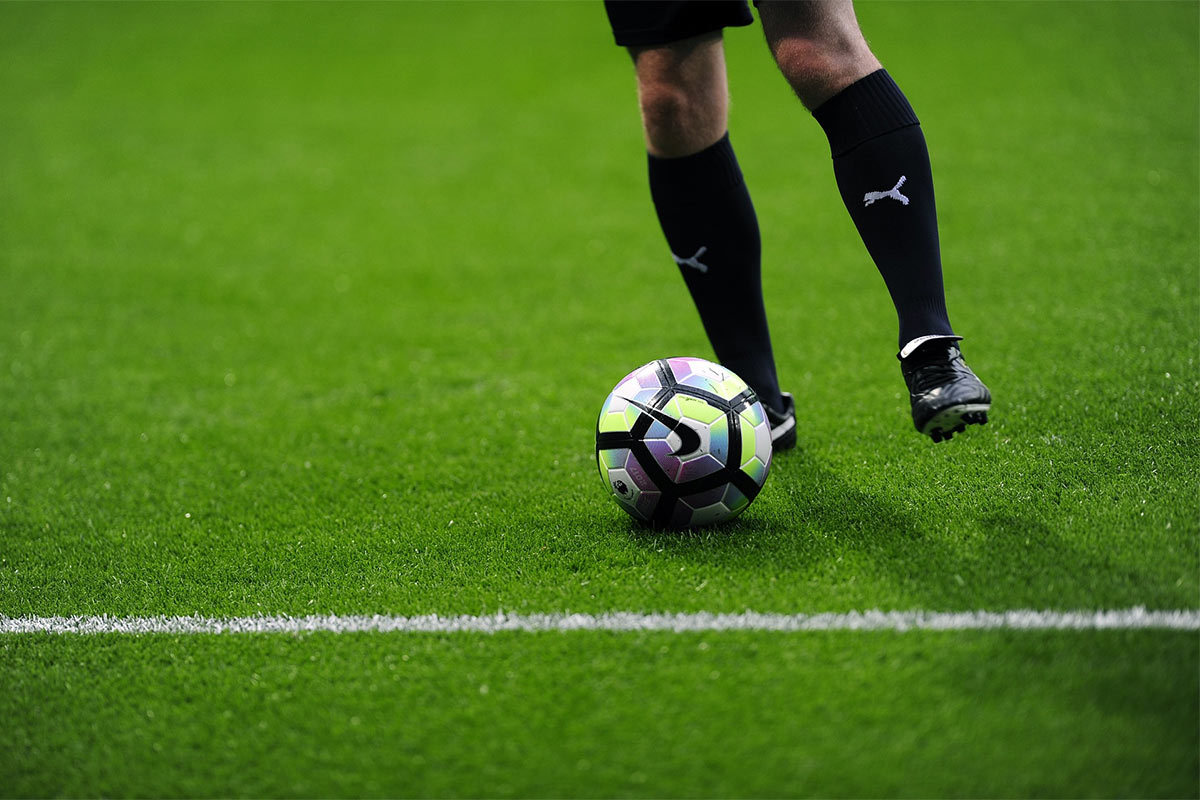Football is one of the most popular sports on the planet and boasts players and fans of all ages. It’s a great way to stay in shape and get competitive, but like any sport, there is the risk of injury.
Luckily, there are plenty of things you can do reduce your chances of getting injured. From stretches to food, let’s take a look at how best to protect yourself.
Hurting your hamstring
Your hamstring is the muscle that goes from your hip, down the back of your thigh, to your knee. Sometimes your hamstring muscles can overstretch, resulting in pain at the back of the leg, as well as potentially bruising and swelling. If you tear your hamstring, you could be out of action for a while, however, if you simply pull your hamstring, you should be fine to continue.
Common symptoms of a damaged or pulled hamstring include swelling, bruising, and pain. Reportedly, people with existing back issues are more susceptible to strained hamstrings, so to avoid this injury, loosen your back with exercises such as lumbar rotation stretches (lying on the floor and rolling your knees from side to side). Basic glute stretches will ease muscles around your hips, while yoga will help you stay flexible, which will lower the risk of hamstring strain. Squats, lunges and hamstring kicks are also great preventative exercises, as they work to strengthen the hamstring muscles.
Want to avoid a hamstring injury? Try doing the Nordic ham curl:
- Kneel on the floor.
- Hook your feet under something sturdy and heavy that can take your weight or ask a partner to hold your feet to act as an anchor.
- Breathe deeply, engage your core and slowly lower yourself to the ground, using your hamstrings to keep your body straight.
- After reaching the ground, push yourself up and repeat.
Injuring your anterior cruciate ligament (ACL)
Your ACL provides support to your knee. However, it’s often damaged by the twisting and turning of the leg, which means it’s a common injury for football players. If you hurt your ACL, it’ll be painful and you’ll likely see swelling around the area. But before then, you may hear and feel it pop or snap…
By building the strength up in your legs, you will lower the risk of an ACL injury. According to HSS, Hospital for Special Surgery, you should do plenty of leg stretches like squats and walking lunges. Having good balance — or proprioception — is vital if you want to avoid injuring your ACL too, so practice standing on one leg (30 seconds on each) regularly to boost your stability. These exercises also help prevent injuries to your menisci, which are cartilages that protect the knee joint.
Injury to the groin
Groin injuries usually occur as a result of over-stretching. If you strain your groin, you’ve basically over-extended your abductor muscles, found in your inner thigh. A slight strain will often cause some pain, however, serious groin strain injuries can impede on your ability to walk and run, which is a serious flaw for a football player.
A good warm-up is all it takes to reduce the risk of this injury, as well as many other injuries. Make sure you stretch your inner and outer thigh muscles daily and see if you can also get regular sports therapy or massage treatments to keep these muscles flexible. A strong core enhances pelvic stability, which will also reduce the chance of groin strains, so do plenty of planks and crunches as part of your basic workout routine. Resistance bands are also very handy for strengthening your inner thigh muscles and preventing groin strain.
Spraining your ankle
A sprain comprises of soft tissue damage. According to the CSP (Chartered Society of Physiotherapy), approximately 70-85% of these injuries are ‘inversion’ sprains, which means the ankle has been turned inwards — common when tackling and dribbling the ball. If you’re looking to reduce the risk of a sprained ankle, try and do these exercises three times a week:
- Calf raises.
- Ankle circles (both clockwise and anti-clockwise).
- Shin raises (lifting your toes, rather than your heels, off the ground).
Before you begin
Football match injuries are primarily caused by sudden movements. According to a scientific study, taking part in a structured warm-up is effective at stopping players from suffering common football injuries and can reportedly even lower these by approximately 33%.
You need to get the blood pumping to your muscles before you start a game. Here’s a top warm-up session to help you prepare your tendons, ligaments and muscles for a good performance:
- 5 minutes: jogging and side-stepping to boost your core temperature.
- 15 minutes: stretching, focusing on your quads, glutes, hamstrings, inner thighs, lower back, calves, Achilles tendon, and hip flexors. You should hold your stretch for ten seconds every time.
- 10 minutes: mimicking football movements without a ball including high kicks, squats, jumps, and side-foot passes.
- 10 minutes: practicing shooting, heading, passing, and dribbling as a team with a football.
Did you know that the food you eat can also help defend you against injury? Eat plenty of protein and carbohydrates — including eggs, whole-wheat pasta, brown rice, turkey and salmon — to build muscle and deliver energy. Also, lower your alcohol intake — it dehydrates you and leaves your muscles more susceptible to cramping and injury.
You could also consider adding some choice supplements to you diet. For example, vitamin D and vitamin D3 can help strengthen your bones and muscles, according to some scientific studies, while omega 7 may offer cardiovascular benefits and vitamin C could alleviate muscle soreness.
Keep yourself at the top of your game with these warm-up and food tips, and avoid being forced to sit out for weeks on an injury!
Sources:
https://www.ncbi.nlm.nih.gov/pmc/articles/PMC3497950/
http://www.csp.org.uk/your-health/sports-advice/physiotherapy-football-injuries
http://www.nsmi.org.uk/articles/football-injuries.html
https://www.ncbi.nlm.nih.gov/pmc/articles/PMC3289174/
http://www.coachmag.co.uk/sport/6832/how-to-prevent-and-treat-the-five-most-common-football-injuries


